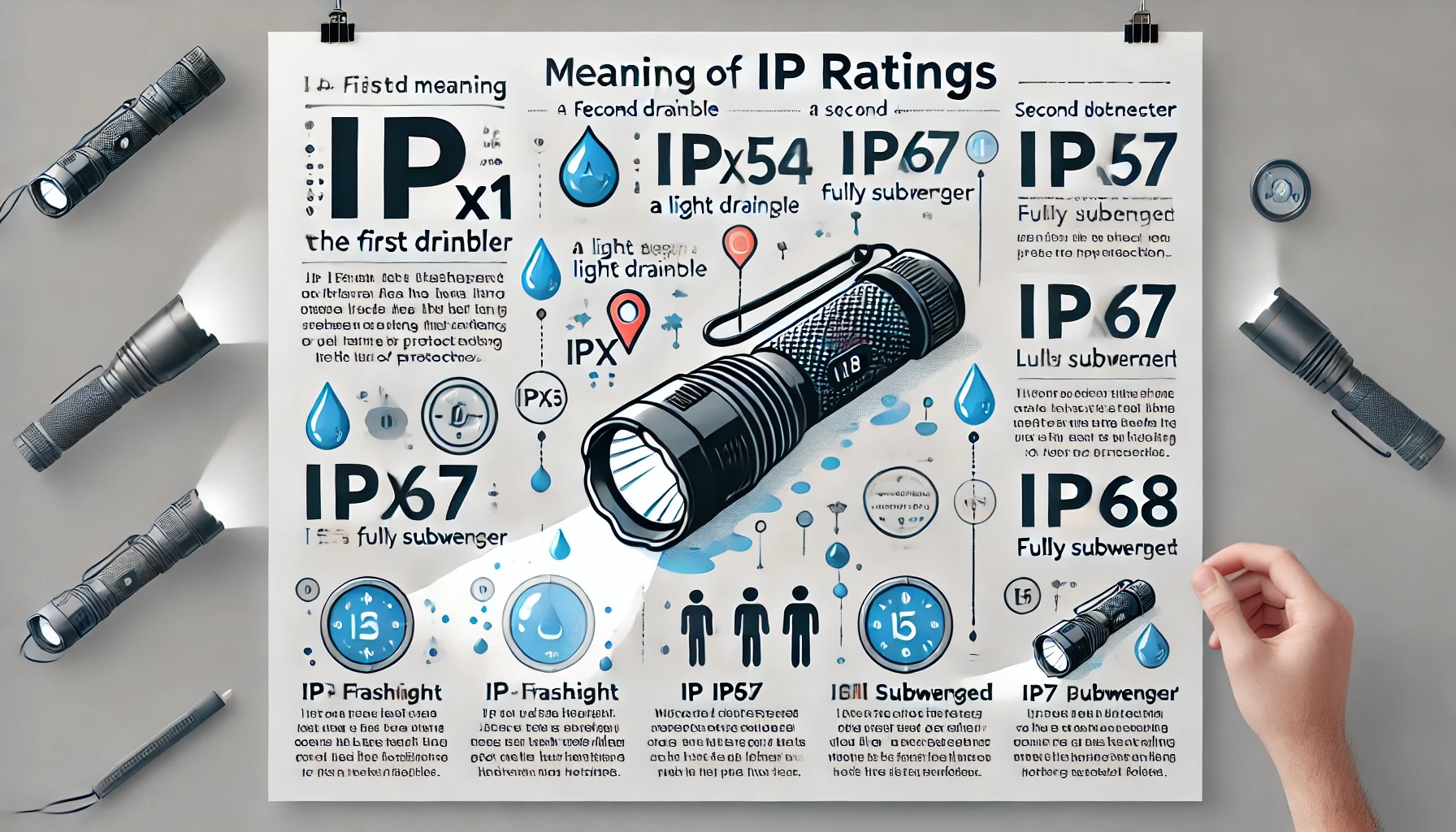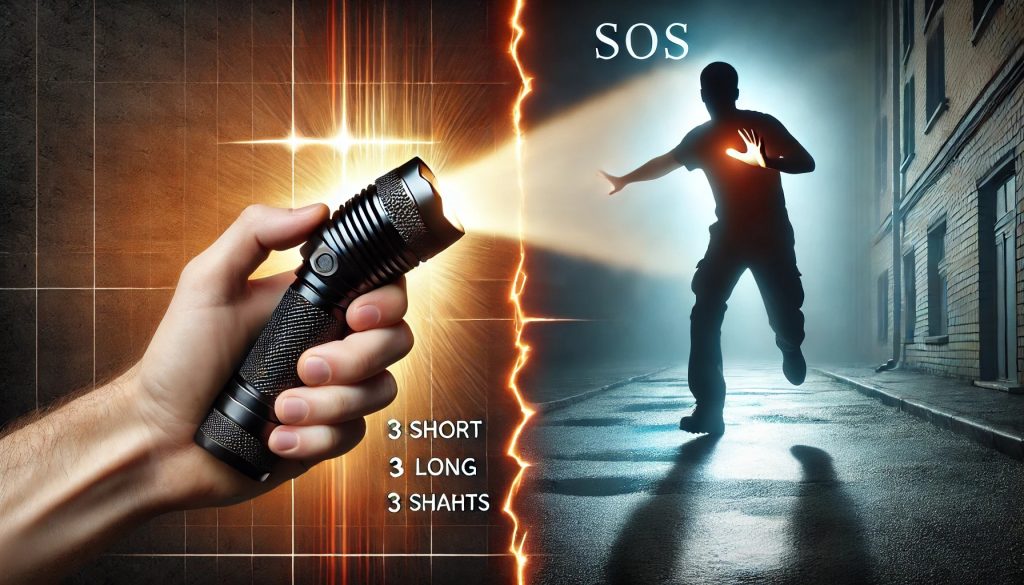When searching for a reliable flashlight, especially a tactical flashlight or one intended for outdoor use, you’ll often encounter something called an “IP rating.” This seemingly technical designation is actually a crucial indicator of a flashlight’s ability to withstand the elements, specifically water and dust. Understanding IP ratings for flashlights is essential for choosing a light that will perform reliably in the conditions you need it most, ensuring its longevity and preventing disappointment when faced with rain, submersion, or dusty environments.
What Exactly Are IP Ratings?
IP stands for Ingress Protection. The IP code is an internationally recognized standard (IEC standard 60529) that classifies and rates the degree of protection provided by mechanical casings and electrical enclosures against intrusion of solid objects (including body parts like hands and fingers), dust, accidental contact, and water. The IP ratings for flashlights consist of two numbers that follow the letters “IP,” for example, IP67 or IP54. Each number signifies a different level of protection.
Breaking Down the Numbers in IP Ratings for Flashlights
The first digit in the IP rating for flashlights indicates the level of protection against solid objects and dust:
- IP0x: No protection against solid objects.
- IP1x: Protected against solid objects greater than 50mm (e.g., accidental touch by hands).
- IP2x: Protected against solid objects greater than 12.5mm (e.g., fingers).
- IP3x: Protected against solid objects greater than 2.5mm (e.g., tools and thick wires).
- IP4x: Protected against solid objects greater than 1mm (e.g., small tools and wires).
- IP5x: Dust protected; ingress of dust is not entirely prevented, but it must not enter in sufficient quantity to interfere with the satisfactory operation of the equipment.
- IP6x: Dust tight; no ingress of dust. This is the highest level of protection against solid particles.
The second digit in the IP rating for flashlights indicates the level of protection against the ingress of water:
- IPx0: No protection against water.
- IPx1: Protection against vertically falling water drops (e.g., light drizzle).
- IPx2: Protection against vertically falling water drops when the enclosure is tilted at an angle up to 15 degrees from its normal position.
- IPx3: Protection against spraying water at any angle up to 60 degrees from the vertical.
- IPx4: Protection against splashing water from any direction. This level is often sufficient for use in heavy rain.
- IPx5: Protection against water jets projected by a nozzle (6.3 mm) against the enclosure from any direction.
- IPx6: Protection against powerful water jets projected by a nozzle (12.5 mm) against the enclosure from any direction.
- IPx7: Protection against temporary immersion in water up to 1 meter for a specified time (usually 30 minutes). This is a common rating for waterproof tactical flashlights.
- IPx8: Protection against prolonged immersion in water under pressure exceeding that for IPx7. The specific depth and duration are usually specified by the manufacturer.
- IPx9K: Protection against powerful high-temperature water jets from any direction. This is a less common rating, typically found in specialized industrial equipment.
Why Understanding IP Ratings for Flashlights Matters
Knowing the IP ratings for flashlights helps you make informed decisions based on your intended use:
- Everyday Carry (EDC): For general everyday use, a rating of IPX4 might be sufficient to protect against rain and splashes.
- Outdoor Activities (Hiking, Camping): If you plan on using your flashlight in more demanding outdoor conditions, including potential heavy rain or accidental drops in puddles, look for ratings of IPX4 or higher. An IP67 rated flashlight, like some of the top tactical flashlights discussed previously, offers excellent protection against both dust and temporary submersion.
- Emergency Preparedness: For emergency flashlights, especially those kept in potentially damp environments, a good water resistance rating (IPX4 or higher) is recommended. Dust resistance (IP5x or IP6x) will also ensure the flashlight functions reliably even after long periods of storage.
- Professional Use (Law Enforcement, Military, Industrial): Professionals working in challenging environments often require flashlights with high IP ratings, such as IP67 or even IP68, to ensure they can withstand dust, dirt, and submersion without failure.
Examples of IP Ratings in Flashlights
Let’s look at some common IP ratings for flashlights and what they mean in practical terms:
- IP54: Dust protected (not fully dust tight) and protected against splashing water from any direction. Suitable for general outdoor use where exposure to light rain and dust is expected.
- IP67: Dust tight (no ingress of dust) and protected against temporary immersion in water up to 1 meter for 30 minutes. This is a robust rating suitable for activities involving water, such as fishing, kayaking, and use in heavy rain. Many high-quality tactical flashlights boast this rating.
- IP68: Dust tight and protected against prolonged immersion in water at a specified depth and duration (e.g., submersible up to 2 meters for 1 hour). Ideal for diving or situations where the flashlight might be submerged for extended periods.
Choosing the Right IP Rating for Your Needs
When selecting a flashlight, consider the environments where you will be using it most frequently. Don’t overpay for a higher IP rating than you realistically need, but also ensure you choose a rating that provides adequate protection for your typical use cases. For instance, if you primarily need a flashlight for indoor use with occasional outdoor use in mild weather, a lower IP rating might suffice. However, if you are an avid adventurer or work in demanding conditions, investing in a flashlight with a higher IP rating for flashlights will significantly enhance its reliability and lifespan. You can often find the specific IP rating details in the product specifications provided by the manufacturer.
Conclusion: Investing in a Protected Light
Understanding IP ratings for flashlights empowers you to choose a durable and reliable lighting tool that can withstand the challenges of your environment. By considering the level of protection against dust and water indicated by the IP code, you can ensure your flashlight will perform when you need it most, whether facing a dusty trail, a sudden downpour, or accidental submersion. Investing in a flashlight with the appropriate IP rating is an investment in peace of mind and the longevity of your lighting equipment.


